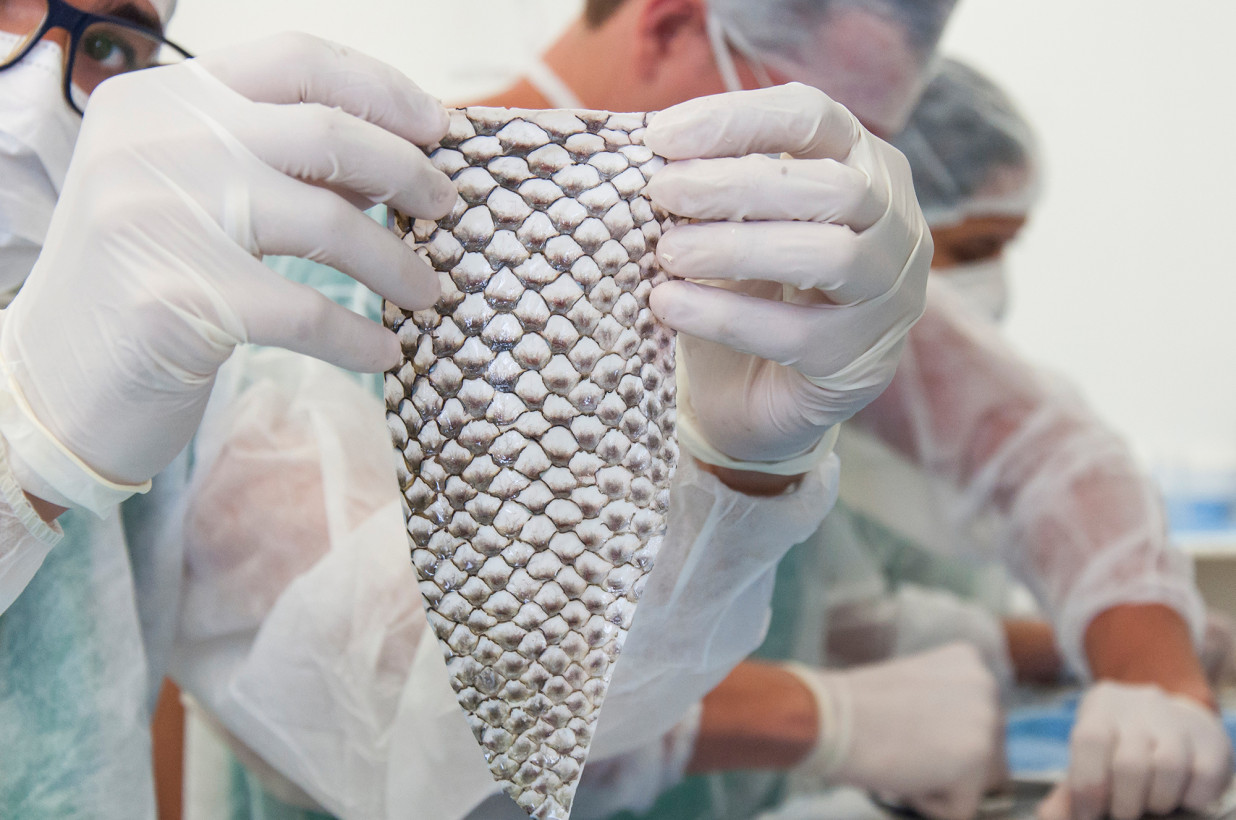
A trans woman had a vagina constructed using the skin of a tilapia fish after her genitals began to shrink and close up following botched surgery.
According to surgeons, Maju, 35, has the chance of a “proper sex life” and a boost of confidence thanks to the sea creature’s skin.
The highly complex procedure, called neovaginoplasty, used a tubular-shaped acrylic mold wrapped with the skin of the freshwater fish in the form of a biological prosthesis to rebuild and extend the vaginal canal in a three-hour operation on April 23.
The process involved inserting two separate molds to create the new vagina. The first device, mounted with the marine membrane, was incorporated inside the vagina over a period of six days.
In contact with the patient’s body, the sterilized and odor-free fish skin displays stimulatory cell growth properties. It is rich in type 1 collagen a substance that promotes healing and has a firmness and elasticity which is as strong and resilient as human skin.
The tilapia membrane attached to and recoated the walls of the vaginal canal acting like stem cells. These were absorbed into the body, transforming into cellular tissue similar to that of an actual vagina.
The second device made from silicone and described as a very “big tampon” is designed to remain inside the vagina for up to six months to prevent the walls from closing.
Professor Leonardo Bezerra said to FocusOn News: “We were able create a vagina of physiological length, both in thickness and by enlarging it and the patient has recovered extremely well. She is walking around with ease, has no pain and is urinating normally. In a couple months we believe she will be able to have sexual intercourse.”
The device can be removed after this period as and when desired.
The process is being hailed as yet another breakthrough in gynecological surgery, which is tackling sensitive predicaments using the aquatic animal skin, normally thrown away as waste, as a substitute for human regenerative tissue.
Speaking to FocusOn News, the transsexual patient revealed she decided to transition 20 years ago, with the support of her family, after realizing in her early teens that she was a woman living in a man’s body.
Maju said: “I was the fourth person in Brazil in 1999 to have, what was then, experimental surgery. But 10 years ago I developed vaginal stenosis. The opening of my vagina started to get narrower and shorter and the canal collapsed.”
Three-hour operation
She suffered constant discomfort which prevented sex with her partner of 12 years, from whom she is now divorced.
Since developing the technique three years ago, Bezzera has successfully treated 10 women and corrected the condition that causes the vagina and uterus to be underdeveloped or absent.
According to Bezerra, vaginal tract closure is common in trans women who have undergone a sex change.
He explained: “This is because, in the traditional procedure, most of the inside parts of the penis are removed and the penile skin is folded into the space between the urethra and the rectum. The outside skin of the penis then becomes the inside of the vagina.
“But because the patient has had hormonal treatment to develop female characteristics, there is penile and testicle atrophy resulting in shrinkage in the size of the penis caused from the loss of tissue. This means the vagina can also be small.”
To complicate matters, before surgery could begin, the medical team discovered that apparent levels of incompetence during the original surgery had left more than one narrow vaginal canal. There were remnants of cavernous bodies, erectile tissue structures, still in the vaginal space.
“The presence of these leftovers of the penis aggravated the closure of the vaginal tract, worsening the symptoms,” said Bezerra.
To reverse this problem, the most common method is to do a skin graft taken from other parts of the body, usually from the intestines, to increase the width and length of the canal. This type of surgery is invasive, long and leaves scars.

Bezerra said: “The great benefit of our technique is that it’s minimally invasive and there’s no need to do abdominal incisions.”

You can check out the latest casting calls and Entertainment News by clicking: Click Here
Click the logo below to go to the Home Page of the Website
Click the logo below to follow ETInside on Twitter
Click the logo below to follow ETInside on Facebook
Click the logo below to follow ETInside on Instagram
Click the logo below to follow ETInside on Pinterest
Click the logo below to follow ETInside on Medium












